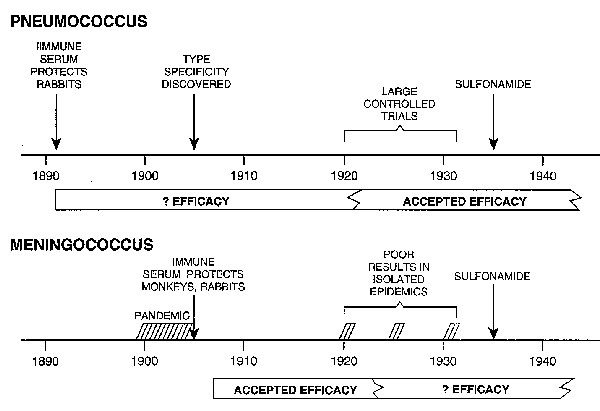Volume 2, Number 3—July 1996
Synopsis
Antibody-Based Therapies for Emerging Infectious Diseases
Figure 2

Figure 2. Schematic illustration of the major events in the development of serum therapy for pneumococcal pneumonia and meningococcal meningitis. For pneumococcal pneumonia, considerable uncertainty existed regarding the usefulness of serum therapy in the decades following the demonstration that immune sera could transfer protection to animals. However, the discovery that type-specific serum necessary for efficacy, followed by extensive clinical trials, led to the general acceptance of serum therapy for pneumococcal pneumonia in the late 1920s. For meningococcal meningitis, the antisera generated against the strains pervalent in the early 1900s proved to be effective in therapy. However, the efficacy of serum therapy in later epidemics of meningococcal meningitis was significantly lower, leading to uncertainty about the value of serum therapy for this infection (16).